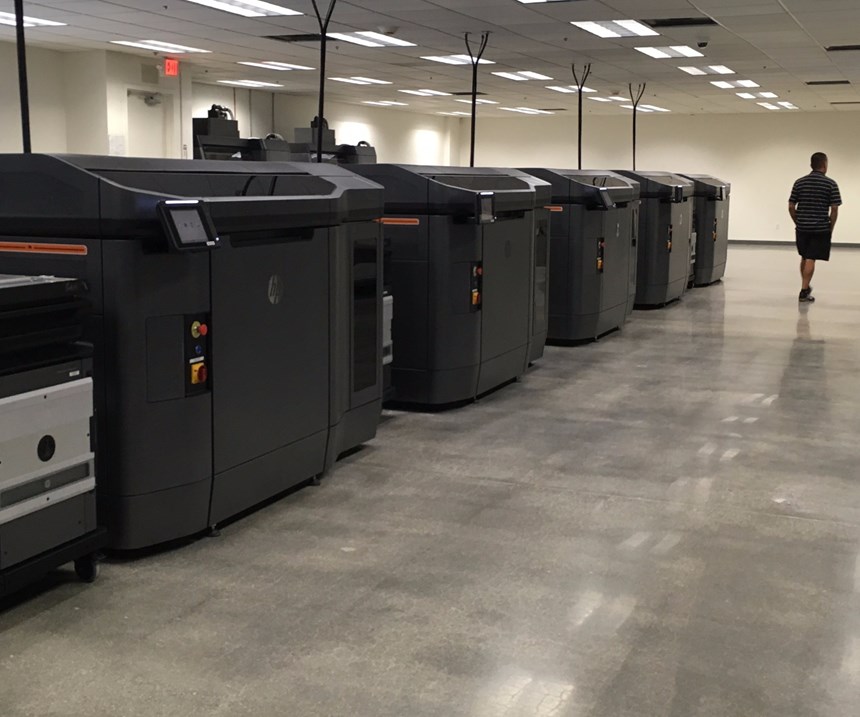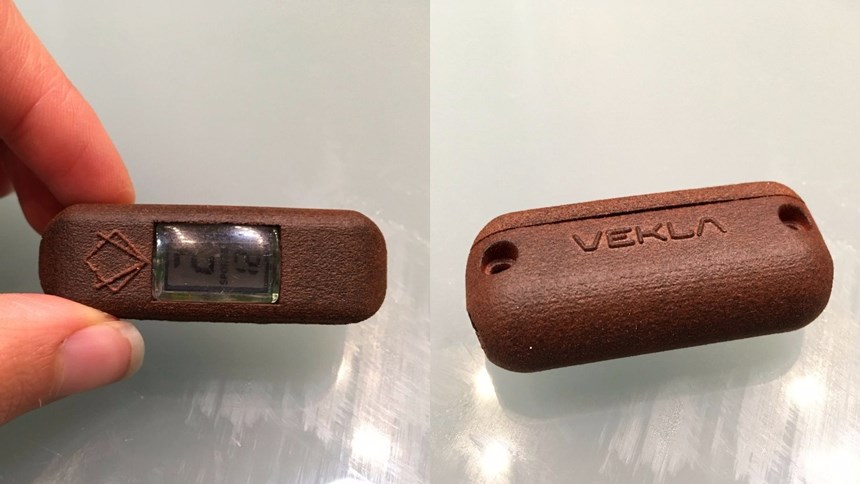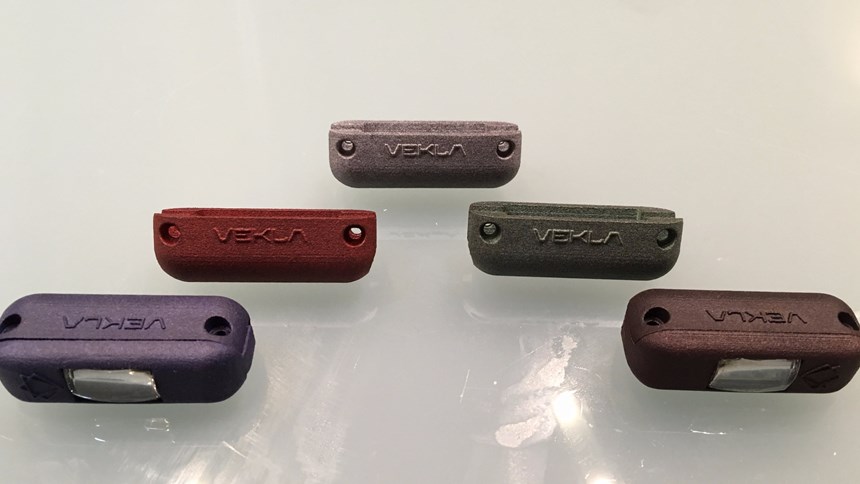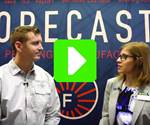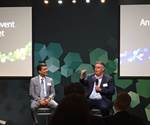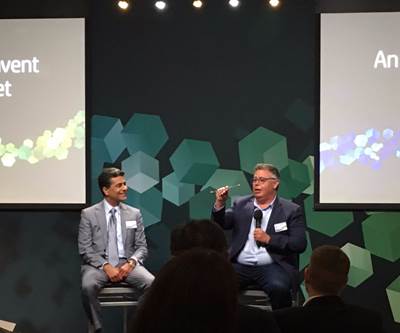How Forecast 3D Is Taking 3D Printing into Mass Production
Forecast 3D got its start building silicone molds from 3D-printed master patterns. Now, through the use of Multi Jet Fusion, the company sees a future in manufacturing large quantities of 3D-printed parts.
When Corey and Donovan Weber founded Forecast 3D in 1994, stereolithography 3D printing was a newer, faster option for producing master patterns for silicone molds. The two brothers, CEO and COO of the service bureau respectively, initially saw 3D printing as a better way of meeting their customers’ needs for this type of one-off work. Now, though silicone molding is still a part of the Forecast 3D business, the company is preparing for a different future, one in which the bulk of its business may be 3D printing end-use parts in quantities that could reach the millions.
A primary driver behind this shift is that 3D printing technology is getting faster and polymer 3D-printed part quality is getting closer to that of injection molding. With a new fleet of Multi Jet Fusion (MJF) 3D printers and auxiliary equipment from HP Inc., Forecast 3D has added the capacity to make hundreds of thousands of end-use parts within the timespan of a week. Where before Forecast 3D might have manufactured the mold, it can now manufacture the polymer parts directly, no mold required.
Foundation in Tooling
Today Forecast 3D occupies two buildings in Carlsbad, California, filled with various 3D printers, CNC machining centers, ovens and paint booths, among other equipment. But the business started with just one machine: an SLA 250/10 stereolithography 3D printer from 3D Systems. It was this printer that helped the Weber brothers launch their silicone tooling business into the world of additive back in 1995.
Creating silicone tooling involves first creating a master pattern; at Forecast 3D, the master is commonly 3D printed using SLA or FDM technology. Then, a finish is applied to make this pattern an exact replica of the desired molded outcome. Forecast 3D suspends the master inside a custom-built box and fills it with liquid silicone. The box goes into an oven to cure, then is separated into two halves by cutting around the pattern. The master is removed, and the remaining silicone tool is ready to be injected with resin in a vacuum oven to make production parts. The advantages to this process include the ability to make use of 3D printing's speed while achieving the high surface finish of injection molding on the final production parts.
While effective, the silicone casting approach didn't make sense for all Forecast 3D's work. For customers needing more than hundreds of parts, the investment in a pattern and multiple silicone tools could be cost-prohibitive. In the past, the logical next step for thousands of parts was typically injection molding. When the Weber brothers were introduced to Multi Jet Fusion (MJF) 3D printing, what they saw was a new logical next step.
In addition to being a faster, more cost-effective option for short runs, MJF 3D printing also has fewer design restrictions than injection molding, in the company’s experience.
“There are many rules that must be followed in order for a design to be successful in the injection molding process,” says Corey Weber. “You have to consider draft, parting lines, undercuts, wall thickness and direction of pull. With AM you don’t have those rules that need to be followed. This makes designing parts so much simpler and faster.” An example might be a mounting boss perpendicular to the direction of pull in a cavity. “That would be impossible with injection molding,” he says, but “With AM, no problem!”
The company has also added metal sintering machines from EOS and SLM Solutions, plus CNC machining equipment over the years.
"Clients come to us with an application and we have all these different routes we can go down," says Corey Weber. “We don't want to 'shoehorn' anyone into a process that doesn't make sense." Having a range of capabilities gives Forecast 3D the flexibility to choose the right solution.
Adding On
The company’s portfolio of options has recently expanded even further, with the installation of 12 HP Multi Jet Fusion 3D printers in its 3D Manufacturing Facility, just across the street from the Carlsbad headquarters. The speed of MJF coupled with an affordable material means that even injection molding designs can make sense in these machines, Donovan Weber says. Rather than batches of hundreds of parts, this fleet of printers can be tasked with volumes in the tens of thousands and up.
The MJF 3D printers use a binder jetting-like process to print parts within build units that are removable from the printers. Binding and detailing agents are deposited onto plastic powder, and each layer is fused at once using infrared light to melt the areas held by the binding agent. This layer-by-layer (rather than point-by-point) fusion allows the process to be faster than laser-based 3D printing systems, and each layer takes the same amount of time to fuse regardless of complexity, according to HP.
Forecast 3D also takes advantage of several other MJF benefits. Because the powder supports the parts as they grow, sacrificial support structures are not necessary. It's even possible to nest parts vertically as well as horizontally, filling the entire build volume with individual, separate parts. All it takes is a gap of at least 3 mm in between them. The lack of support therefore allows for larger quantities to be produced at once, and enables greater design freedom by eliminating the need to design in the supports and then remove them. And because heating takes place layer by layer with powder packed beneath the parts, warping is far less with MJF than with SLS, says Corey Weber.
Following printing, the build units (mobile trollies on wheels) are removed from the printers and transferred to separate HP postprocessing stations. After a rapid cooling process, unused powder is removed from the parts and they are ready for any necessary finishing.
To service its 12 MJF printers, the 3D Manufacturing Facility is equipped with 28 build units and five postprocessing stations, enough to enable 24/7 production. With all 12 printers running at that rate, it would be possible to manufacture 50,000 unique iPhone 6 cases within a week, or as many as 2 million of a smaller gear part that could be nested within the build envelope. With this capability, the company sees MJF as a solid alternative to injection molding for the right parts and quantities.
A Production Alternative
The demand isn't quite there yet, as adoption can be somewhat slow with larger companies, but Forecast 3D does have some customers already taking advantage of the cost and time savings MJF promises.
"You don't need $9,000 to launch a product that's not proven. You can start with $300 and get 50 units to start. It’s much less of a risk.”
One of these is Vekla, a company that sells leash watches for surfers. These small waterproof devices attach to the surfboard leash, the ankle strap that tethers surfers to their boards, providing a way to keep track of the time without risking a smartphone or other high-tech device that could get lost in the waves. The plastic cases for these watches are manufactured in two halves that the consumer assembles around his or her leash of choice.
The first run of Vekla cases were injection molded at a cost of more than $8,000. It took about 8 weeks to manufacture the mold and receive the first 1,000 units, the minimum order from the manufacturer. In contrast, Forecast 3D recently completed the second run of 200 Vekla cases on its MJF printers, turning them around in 2 days.
The printed parts can be dyed different shades but are otherwise ready for assembly as soon as they come out of the box. In addition to being consistent and accurate, they are also durable enough to stand up to the saltwater environment they are used in. And in contrast to injection molding, there is no large capital investment in tooling or minimum order volume, which contributes to cost savings.
This lowered barrier to entry offers huge promise for small businesses and startups. "You don't need $9,000 to launch a product that's not proven," says Corey Weber. "You can start with $300 and get 50 units to start. It's much less of a risk."
Related Content
This Drone Bird with 3D Printed Parts Mimics a Peregrine Falcon: The Cool Parts Show #66
The Drone Bird Company has developed aircraft that mimic birds of prey to scare off problem birds. The drones feature 3D printed fuselages made by Parts on Demand from ALM materials.
Read MoreDMG MORI: Build Plate “Pucks” Cut Postprocessing Time by 80%
For spinal implants and other small 3D printed parts made through laser powder bed fusion, separate clampable units resting within the build plate provide for easy transfer to a CNC lathe.
Read MoreAt General Atomics, Do Unmanned Aerial Systems Reveal the Future of Aircraft Manufacturing?
The maker of the Predator and SkyGuardian remote aircraft can implement additive manufacturing more rapidly and widely than the makers of other types of planes. The role of 3D printing in current and future UAS components hints at how far AM can go to save cost and time in aircraft production and design.
Read MoreHow Machining Makes AM Successful for Innovative 3D Manufacturing
Connections between metal 3D printing and CNC machining serve the Indiana manufacturer in many ways. One connection is customer conversations that resemble a machining job shop. Here is a look at a small company that has advanced quickly to become a thriving additive manufacturing part producer.
Read MoreRead Next
Video: 3D Printing Is a Complement and Competitor to Injection Molding
Ken Burns of Forecast 3D, an early adopter of HP Multi Jet Fusion, sees 3D printing as both a complement and a competitor to injection molding. He shares why in this interview.
Read MoreHP Partners with Deloitte to Bring Additive Manufacturing to the Enterprise Level
HP’s Multi Jet Fusion process is being used as a production technology today, but now the company has its sights set on enterprise-level (and industry-wide) disruption enabled by partnerships and spanning the entire supply chain.
Read MorePostprocessing Steps and Costs for Metal 3D Printing
When your metal part is done 3D printing, you just pull it out of the machine and start using it, right? Not exactly.
Read More
.jpg;width=70;height=70;mode=crop)

